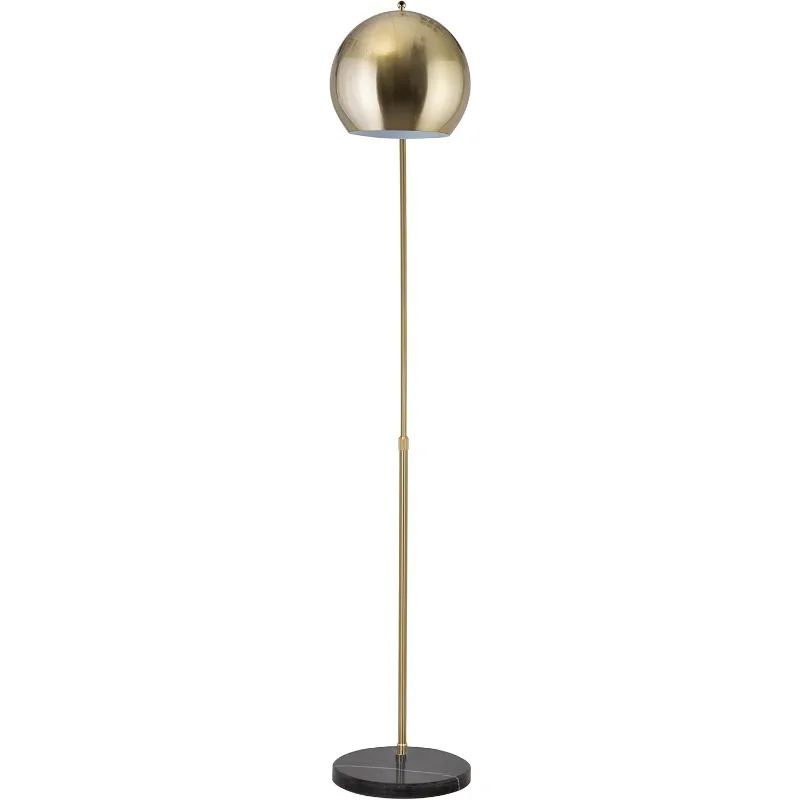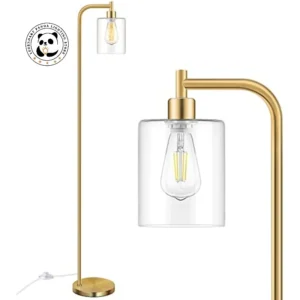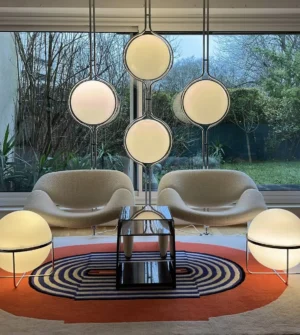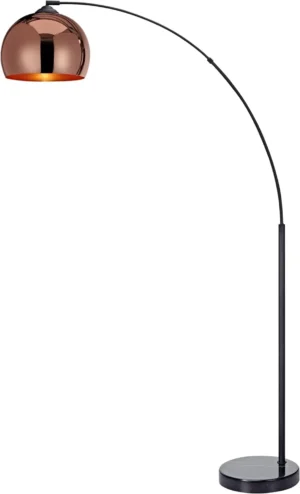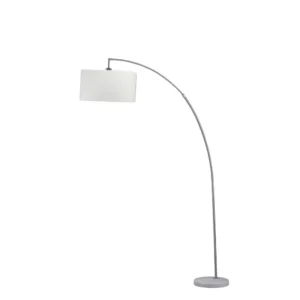What Are Arc Lights? Understanding the First Practical Electric Light
Arc lights were the first widely used form of electric lighting, fundamentally changing how public spaces were illuminated before the incandescent bulb became common. These remarkable devices produced light through an electric arc—essentially a controlled electric spark—that jumped between two electrodes, typically made of carbon.
When electricity flowed across the gap between these electrodes, it ionized the air, creating a bright plasma that generated an intense bluish-white light. This light was significantly brighter than gas lamps of the era, producing up to 10 times the illumination of the best gas lights. The distinctive characteristics of arc lights included not just their exceptional brightness, but also a characteristic hissing sound and considerable heat output.
The historical significance of arc lighting cannot be overstated. These devices represented humanity’s first successful attempt to harness electricity for practical illumination on a large scale, paving the way for the electrification of cities worldwide. Understanding the principles behind choosing perfect arc floor lamp designs today requires appreciating how this pioneering technology transformed lighting practices.
Definition Box: Arc Light
An electric light that produces illumination by creating an electric arc between two electrodes (typically carbon rods). The intense bluish-white light results from the ionization of gas between the electrodes, creating a plasma that emits a powerful glow. Arc lights were the first practical electric lighting technology widely adopted for public use.
The Historical Development of Arc Light Technology
The journey of arc light technology began in the early 1800s when Sir Humphry Davy first demonstrated that an electric current passing between two carbon rods could produce an intensely bright light. Despite this breakthrough, several key limitations prevented immediate widespread adoption. The technology required powerful batteries that were expensive and inefficient, and the carbon electrodes would quickly burn away, requiring constant adjustment and replacement.
Several critical innovations eventually transformed arc lighting from laboratory curiosity to practical technology. Léon Foucault made a significant improvement in 1844 by creating a mechanism that automatically fed the carbon rods together as they burned away. This addressed one of the major maintenance issues that had limited arc light usability.
In 1876, Pavel Yablochkov introduced his “Electric Candle,” which arranged the carbon rods in parallel rather than end-to-end, creating a more stable and longer-lasting design. This innovation allowed arc lights to burn for several hours without adjustment, making them commercially viable for the first time.
Perhaps the most important breakthrough came from American inventor Charles F. Brush, who developed an improved dynamo (generator) and created an automatic regulatory system for arc lights. By 1879, Brush’s arc light systems were being installed in cities across America, marking the transition of the technology from experimental curiosity to practical application.
These technological advancements directly influenced the purpose evolution of arc lamps over time, establishing design principles that would later inspire even home lighting fixtures. The development process required solving complex problems around power generation, electrode consumption, and light regulation—challenges that would define electrical engineering for decades to come.
Primary Purpose: Revolutionizing Urban Street Lighting
The most visible and transformative application of arc lights was in urban street illumination, where they fundamentally changed the experience of city life after dark. Before arc lighting, city streets were dimly lit by gas lamps that provided minimal illumination, creating dangerous conditions and limiting nighttime activity.
Arc lights delivered a dramatic improvement, with each lamp providing illumination equivalent to hundreds of candles. When Paris installed arc lights along the Avenue de l’Opéra in 1878, the effect was so dramatic that the street became a tourist attraction, with visitors coming specifically to marvel at the artificial daylight created by these powerful lamps. People were astonished by the ability to read newspapers easily on the street at night—something previously impossible.
The public reaction to these installations varied from wonder to concern. While many celebrated the increased visibility and safety, others complained about the harsh glare and unnatural brightness. Some newspaper accounts described pedestrians using umbrellas at night to shield their eyes from the intense illumination. Despite these mixed reactions, the benefits for public safety were undeniable, with crime rates decreasing significantly in well-lit areas.
The social impact extended beyond safety. With reliable nighttime illumination, businesses could extend their operating hours, creating new economic opportunities. Public transportation could operate more safely after dark. Urban social life transformed as people became more comfortable traveling through and gathering in public spaces at night. When evaluating what look arc floor lamp designs offer today, many still reflect the grandeur and dramatic lighting effect of these original street installations.

Illuminating Large Public and Commercial Spaces
Arc lights found important applications beyond street lighting, transforming various commercial and public venues:
Department Stores and Shopping Arcades: Early adopters like Marshall Field’s in Chicago installed arc lights to illuminate their grand shopping spaces, allowing extended shopping hours and creating dramatic displays that drew customers. The bright, daylight-like quality of arc lighting showcased merchandise in ways that dim gas lighting never could.
Railway Stations and Transportation Hubs: Train platforms and waiting areas benefited immensely from the powerful illumination of arc lights, improving safety for passengers boarding and disembarking at night. The large open spaces of stations were well-suited to the broad coverage provided by these intense lights.
Factories and Industrial Facilities: Arc lighting extended productive working hours and improved precision work in industrial settings. Factory owners reported significant productivity increases after installation, as workers could see their tasks clearly regardless of the time of day.
Exhibition Halls and World’s Fairs: The 1889 Paris Exposition featured spectacular arc lighting displays that dazzled visitors and demonstrated the modern marvel of electric illumination. These installations showed the potential of electricity to transform public spaces and became symbols of progress and technological achievement.
The economic benefits of these applications helped overcome the technical challenges and costs associated with arc lighting. Businesses could justify the expense through extended operating hours, improved safety, and the prestigious image conveyed by having the latest lighting technology. Many of the advantages arc lamps matter modern lighting designs still draw inspiration from these early commercial applications.
Specialized High-Intensity Applications
Lighthouses and Maritime Navigation
Arc lights revolutionized lighthouse technology, replacing oil lamps with vastly more powerful electric beams. The intense brightness of arc lights extended the visible range of lighthouse signals from a few miles to over 20 miles in good conditions. This dramatic improvement in maritime safety reduced shipwrecks and allowed for safer navigation near coastlines even in poor weather.
Military and Security Applications
The military quickly recognized the strategic value of arc lighting. Coastal defense installations employed powerful arc light searchlights to detect approaching vessels at night. During wartime, naval vessels used arc searchlights to spot enemy ships and submarines. The psychological impact of these powerful beams also proved valuable—being caught in an arc light’s beam could be disorienting and intimidating to opposing forces.
Entertainment and Theatrical Uses
Theater productions were transformed by the introduction of arc lighting. For the first time, stage designers could create dramatic lighting effects with unprecedented brightness. Early film studios relied exclusively on arc lights, as they were the only artificial light source powerful enough for the slow film stocks of the era. The characteristic harsh blue-white light of carbon arcs became associated with the glamour of early Hollywood.
Construction and Emergency Services
Nighttime construction work became feasible with arc lighting, accelerating project timelines and allowing work to continue around the clock when necessary. Similarly, emergency services adopted portable arc lights to illuminate disaster scenes, search and rescue operations, and medical treatment areas during nighttime emergencies. Modern LED arc floor lamp designs still reflect this heritage of providing focused, powerful illumination where it’s needed most.
Technical Limitations and Drawbacks of Arc Lighting
Despite their revolutionary impact, arc lights presented significant challenges that limited their adoption, particularly in smaller-scale applications. Maintenance demands were perhaps the most problematic issue—carbon electrodes typically needed replacement every 8-12 hours of operation, requiring regular attention from skilled operators.
Operational inconsistencies also plagued early systems. Arc lights were notorious for their flickering and humming, creating an unsteady light quality that could be distracting or even headache-inducing. The characteristic hissing sound produced by the electric arc added to the noise pollution in spaces where they were installed.
Safety concerns were significant as well. The intense heat generated by arc lamps created fire hazards, particularly when installed indoors or near flammable materials. Early fire incident reports frequently cited arc lighting as the ignition source for building fires, leading to stricter installation regulations.
The harsh quality of light produced by arc lamps made them particularly unsuitable for residential spaces. The intense blue-white illumination was simply too bright and unflattering for home use, casting harsh shadows and creating an institutional atmosphere rather than a comfortable one.
Cost considerations further limited adoption. Beyond the initial installation expenses, which were substantial, the ongoing maintenance costs included not just replacement carbon rods but also skilled labor for regular adjustments. Understanding these historical disadvantages arc lamps modern lighting designers have worked to eliminate has shaped contemporary fixture development.
The Transition to Incandescent and Other Lighting Technologies
Thomas Edison’s development of a practical incandescent light bulb in 1879 began a gradual transition away from arc lighting in many applications. Incandescent bulbs offered significant advantages for smaller spaces: they produced a warmer, steadier light, operated silently, required minimal maintenance, and could be manufactured in various sizes for different purposes.
The transition didn’t happen overnight. Arc lights maintained their dominance in street lighting and other large-space applications for decades, while incandescent lighting slowly gained ground in commercial and residential settings. By the early 1900s, many cities operated hybrid systems with arc lights illuminating major thoroughfares and incandescent lights serving residential streets and smaller spaces.
| Feature | Arc Lights | Incandescent Bulbs |
|---|---|---|
| Light Output | 1,000-4,000 lumens | 10-100 lumens (early models) |
| Maintenance | Every 8-12 hours | Thousands of hours |
| Light Quality | Harsh blue-white | Warm yellow |
| Noise Level | Hissing/humming | Silent |
| Heat Production | Extreme | Moderate |
| Size | Large, bulky | Compact, scalable |
| Safety | Fire risk | Relatively safe |
| Cost | High installation and maintenance | Higher initial cost, lower maintenance |
The practical advantages of incandescent technology eventually led to the phasing out of carbon arc lights in most general lighting applications. However, arc lighting maintained its relevance in specialized applications requiring extreme brightness well into the 20th century. This technological evolution continues to influence modern arc floor lamps that combine historical aesthetics with contemporary technology.
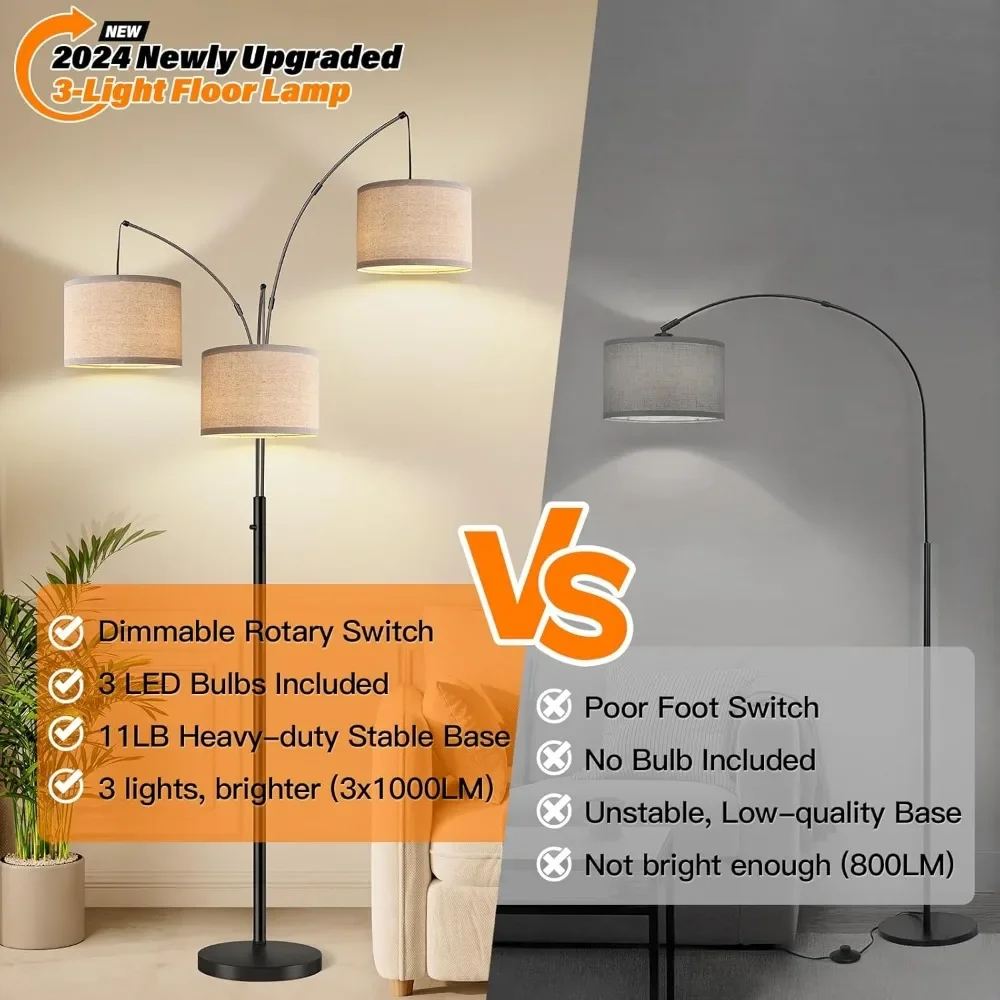
Modern Descendants: How Arc Light Technology Lives On Today
The technological principles pioneered in early arc lighting continue to influence modern lighting technologies in surprising ways. Gas discharge lamps—including mercury vapor, metal halide, and sodium vapor lights—are direct descendants of arc light technology, using electric arcs through gas to produce illumination, though with much greater efficiency and reliability.
Xenon arc lamps represent the most direct modern continuation of traditional arc lighting principles. These specialized lamps still create light through a true electric arc, but use xenon gas in a sealed environment rather than open-air carbon electrodes. They’re found in movie projectors, specialized medical equipment, and high-end automotive headlights.
Traditional carbon arc technology itself survives in extremely specialized industrial processes, particularly in carbon arc cutting and welding, where the intense heat generated by the arc is the primary benefit rather than the light produced.
Contemporary lighting solutions, including LED technology, have largely replaced arc lights in most applications while fulfilling similar functional needs. However, the aesthetic impact of arc lighting designs continues to influence modern fixtures. Dimmable arc floor lamp models combine the dramatic silhouette of traditional arc lights with modern technology that addresses historical limitations like brightness control—something impossible with original arc lighting.
How Did Arc Lights Shape Modern Urban Development?
How did the introduction of reliable nighttime illumination transform urban planning and city life? The impact was profound and multifaceted, extending far beyond simple visibility.
Arc lighting fundamentally altered urban planning principles by removing darkness as a limiting factor in city design. Streets could be wider, public squares larger, and buildings taller once powerful lighting eliminated the shadows that previously made such spaces foreboding after sunset. The “City Beautiful” movement of the late 19th century embraced electric lighting as a core element of urban design, using illumination to highlight architectural features and create dramatic nighttime cityscapes.
The extension of productive hours beyond daylight transformed economic and social patterns. Factories could operate around the clock, stores could remain open into the evening, and entertainment venues flourished with nighttime performances. This temporal expansion of activity created entirely new patterns of urban life and commerce.
Safety improvements led to significant changes in urban living patterns. Women, in particular, gained greater freedom of movement in well-lit cities, as the improved visibility reduced both actual crime and perceived danger. Historical accounts note how electric lighting transformed formerly dangerous districts into viable commercial and residential areas.
The cultural impact of “electrified cities” was equally significant. Electric lighting became a symbol of modernity and progress, with cities competing to install the most impressive lighting systems. Nighttime illumination transformed urban aesthetics, creating new forms of beauty and spectacle that influenced everything from tourism to the arts. The perfect arc floor lamp guide for today’s homes often references this historical transformation of light from pure utility to aesthetic statement.
Are Carbon Arc Lights Still Used Today?
Carbon arc technology, while largely replaced by more efficient and practical lighting solutions, continues to serve in highly specialized applications today. Traditional carbon arc lights maintain a presence in certain film restoration and preservation contexts, where their distinctive light quality helps replicate the original viewing conditions of classic films. The Academy Film Archive in Los Angeles, for instance, maintains carbon arc projectors specifically for this purpose.
In industrial processes, carbon arc technology remains valuable in certain specialized metalworking applications. Carbon arc cutting and gouging techniques utilize the intense heat generated by the arc rather than the light, offering unique capabilities for certain materials that alternative methods cannot match.
Historical preservation and educational demonstration represent another contemporary use. Science museums and historical exhibitions sometimes feature working carbon arc lights to demonstrate the technology that first electrified our cities. These demonstrations provide a tangible connection to an important chapter in technological history.
Modern lighting technologies have largely replaced traditional arc lights while serving similar functions. High-intensity discharge lamps, LED arrays, and other contemporary technologies deliver the powerful illumination once exclusive to arc lighting, but with greater efficiency and less maintenance. The aesthetic influence of arc lighting lives on in vintage arc floor lamp designs that capture the dramatic visual impact of historical technology while incorporating modern conveniences.
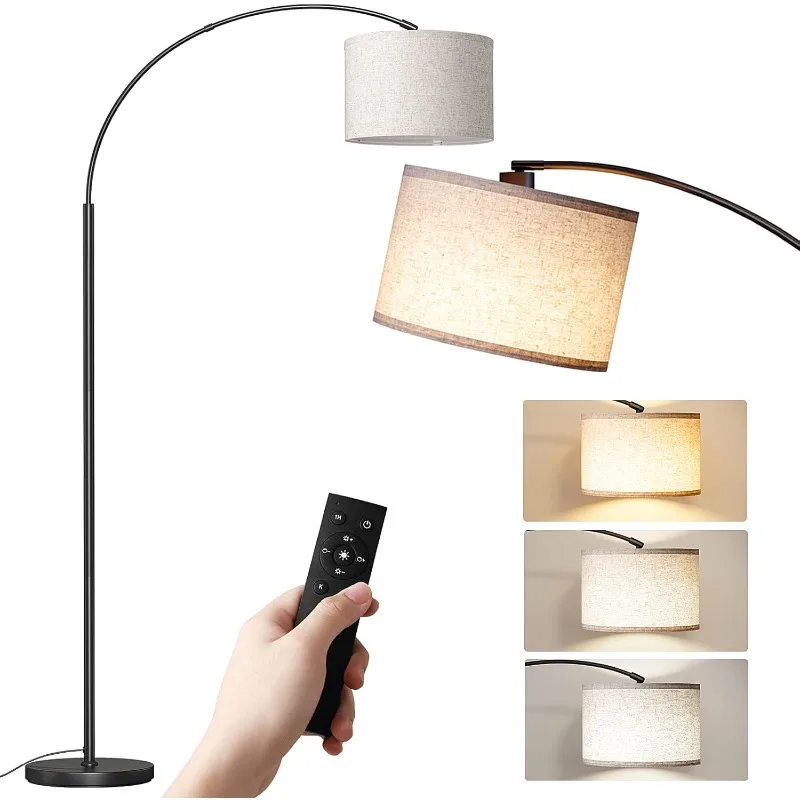
How Do Modern Arc Floor Lamps Differ From Historical Arc Lights?
The journey from industrial arc lighting to today’s elegant arc floor lamps represents a fascinating evolution in both form and function. While historical arc lights were purely utilitarian devices designed for public illumination, modern arc floor lamps have transformed into sophisticated interior design elements that combine aesthetic appeal with practical lighting solutions.
The most obvious technical difference lies in the light source itself. Historical arc lamps used actual electric arcs jumping between carbon electrodes, requiring constant maintenance and producing harsh, extremely bright illumination. Contemporary arc lamps typically use LED bulbs or other modern light sources that provide controlled, pleasant illumination without the maintenance headaches, noise, or safety concerns of their predecessors.
Contemporary arc floor lamp designs retain the distinctive curved arm that gave arc lights their name, but reimagine this functional element as an aesthetic feature. The graceful arc creates a dramatic silhouette that has become iconic in interior design, allowing light to be projected over seating areas while the base remains safely positioned against a wall or behind furniture.
Modern arc lamps offer features that would have been impossible with historical technology:
- Adjustable brightness through integrated dimming systems
- Color temperature options from warm to cool white light
- Flexible positioning through adjustable arcs and heights
- Energy efficiency that historical lighting engineers could only dream about
- Silent operation without the characteristic hiss and crackle of carbon arcs
Brass Arc Floor Lamp, Contemporary Arc Floor Lamp, LED Arc Floor Lamp
Price range: $490.72 through $522.04 Select options This product has multiple variants. The options may be chosen on the product pageChrome Arc Floor Lamp, LED Arc Floor Lamp
Price range: $304.95 through $1,210.40 Select options This product has multiple variants. The options may be chosen on the product pageContemporary Arc Floor Lamp, Large Arc Floor Lamp, Marble Base Arc Floor Lamp
$224.94 Select options This product has multiple variants. The options may be chosen on the product pageContemporary Arc Floor Lamp, Silver Arc Floor Lamp
$459.99 Select options This product has multiple variants. The options may be chosen on the product pageLED Arc Floor Lamp, Rattan Arc Floor Lamp
$313.58 Select options This product has multiple variants. The options may be chosen on the product pageVintage Arc Floor Lamp, Wood Arc Floor Lamp
Price range: $603.87 through $1,346.09 Select options This product has multiple variants. The options may be chosen on the product page
Today’s arc floor lamps at Interior Ivy capture the dramatic visual impact of historical lighting technology while eliminating its drawbacks. They bring the majesty of what was once exclusively municipal infrastructure into the intimate space of the home, transforming a practical technology that once lit entire city blocks into a focused source of illumination perfect for reading nooks, dining areas, and living rooms.
The evolution from carbon arc street lamps to elegant LED arc floor lamps demonstrates how technological heritage can inspire contemporary design. These modern interpretations honor their historical predecessors while meeting present-day needs for efficiency, safety, and aesthetic refinement.

